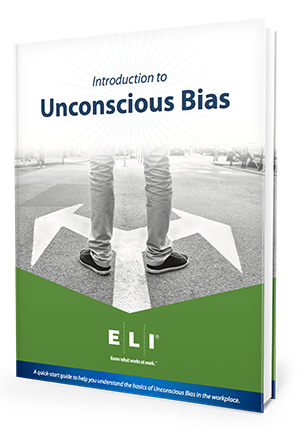When you think of workforce diversity, you probably think of the kind of diversity you can easily see — or at least that you can identify easily. Diversity of race, ethnicity, sexual orientation, gender, and age are all things that modern workplaces are striving to increase. Employers want to create vibrant, creative teams that better reflect the diversity of the people their products and services strive to reach.
Plus, because employer discrimination against marginalized groups is illegal, companies must make a special effort to ensure that member of these groups are given a fair chance to apply and be promoted.
However, there’s another type of workplace diversity that employers should be paying attention to. And that is cognitive diversity.
What is the definition of cognitive diversity? “Cognitive diversity” in the workplace refers to the wide variety of ways your employees think and solve problems. HR professionals may also use the term to refer to different work styles, learning styles, personality styles, perspectives, backgrounds, or even cognitive levels within the workforce (for some employers, this includes recruiting employees with autism or Down Syndrome).
Cognitive diversity tends to get much less attention than identity diversity because it’s harder to see and isn’t related to mandatory compliance efforts. But cognitive diversity can still deliver big benefits, as we’ll explain.
Cognitive Diversity Engages Employees
This FastCompany article cites a study from Deloitte and the Billie Jean King Leadership Initiative (BJKLI) that analyzed the responses of 3,726 individuals from a variety of backgrounds on the topics of diversity and inclusion.
The study found that Millennials, in particular, viewed diversity and inclusion through the lens of teamwork. For them, “inclusion” means working in a collaborative environment where everyone’s input and experience is valued.
Explore These Popular Posts from the ELI Blog

75 Years of Creating Commonality
Last month, I spoke at the 75th SHRM conference, which, as always, was energizing and well run. There were more than 23,000 people in attendance, which I think is a record.

Igniting a Continuous Cycle of Learning Through Inclusion
Continuous learning is a critical component of building a successful and inclusive workplace. While monthly awareness campaigns like Pride Month and Juneteenth provide opportunities to
This view contrasts with those of older generations, who tend to view diversity and inclusion through the lens of fairness, equity, and civil rights.
Employers need to pay attention to how ideas about diversity are evolving, especially now that Millennials make up the majority of the workforce. These younger workers expect to work in an environment that encourages all types of voices and experiences, including their own.
The end goal of this kind of teamwork and idea equity, by the way, benefits the employer too. The aim of more cognitive diversity at work is more innovation and better teamwork, which gets better results faster for everyone.
It’s totally understandable that the employees who have done the hard work of helping assimilate diverse groups in the workplace over generations still tend to look at diversity as an initiative in fairness. But as the study’s authors point out, Millennials are indicating that they’re ready for the next step: The type of inclusion where employees of all backgrounds work together seamlessly and in harmony for the best business outcomes.
Cognitive Diversity Boosts Problem Solving
In this Harvard Business Review article, researchers describe the interesting trend that they noticed over years of observing groups work together to tackle new and complex challenges.
Alison Reynolds and David Lewis eventually concluded that the biggest factor in whether or not teams worked together effectively was greater diversity in the ways participants approached problem-solving.
They measured the groups’ diversity in terms of how they “engaged with and reacted to change” and asked those groups to complete exercises that “require the group to formulate and execute a strategy to achieve a specified outcome, against the clock.” They found that those groups with the least cognitive diversity were the most likely to struggle to complete the task, and the ones with greater cognitive diversity completed it more quickly.
In fact, they believe that this cognitive diversity is even more important than identity diversity in predicting whether teams will work together effectively.
“Intuitively, this makes sense,” they write. “Tackling new challenges requires a balance between applying what we know and discovering what we don’t know that might be useful. It also requires individual application of specialized expertise and the ability to step back and look at the bigger picture.”
This balance is exactly what cognitive diversity provides in the workplace.
Cognitive Diversity Eliminates “Groupthink”
Along with helping teams solve problems more quickly and effectively, cognitive diversity also prevents the serious, innovation-killing side effects of the absence of cognitive diversity.
Namely, when everyone on staff tends to think the same way and approach problems with the same mental tools, it tends to create an echo chamber.
As humans, we’re already wired to recognize and reinforce ideas that are the most similar to our own, and dismiss conflicting ideas. This is an example of cognitive bias, and it happens subconsciously. So when no one is around to object or even present other ways of looking at a problem, this tendency toward groupthink gets even stronger.
There are other natural tendencies toward groupthink in companies and organizations, as well. Specifically, even though employees might instinctively approach a problem differently than their peers or have a conflicting perspective, many of them keep quiet and agree with the status quo in order to advance their own careers. In some cases, this pressure to conform may even be happening subconsciously.
This tendency to conform will be especially pronounced if employees have learned through leaders’ words and actions that conflict and disagreement are not tolerated.
This can be quite damaging, because respectful conflict keeps your company or organization innovative and in-touch.
We like how Ted Bauer sums it up in his Medium article:
“What happens in a group-think company when something new/big arrives, like mobile or digital? One person says ‘Pfft, that’s a fad’ and everyone else agrees. There’s no cognitive diversity.”
Ready to learn more about what Unconscious Bias is, and how it can affect your workplace? Download the eBook!
How to Pave the Way for More Cognitive Diversity in the Workplace
Increasing the level of cognitive diversity on your staff might be a little more complicated than increasing the levels of demographic diversity (although that, too, can be a complicated process that takes place over years and not months).
You can try to recruit and hire for cognitive diversity, sure.
But you can also try to bring out the cognitive diversity that might already be hidden amongst your existing team.
This requires cultivating a workplace culture where conflicting viewpoints are welcomed and listened to with respect. Leaders should be actively looking for employees who disagree with them and valuing the contributions they make.
This mindset runs counter to some traditional management strategies and perhaps even counter to human nature. But unless a special effort is made to cultivate cognitive diversity in the workplace, your company or organization may find itself falling behind competitors and out of touch with the people it’s trying to serve.
Overhauling your workplace culture to one where dissent and healthy conflict are welcomed won’t happen overnight. Leaders need to recognize the importance of cognitive diversity and be fully on board with efforts to increase it. And employees need to understand the importance of listening and apologizing, two of the most essential skills when it comes to creating a civil and welcoming workplace.
That’s why civility training can be a good first step toward boosting cognitive diversity examples on your workforce.
With professional training, employees will learn — and more importantly, practice — the appropriate ways to respond to conflict and bad behavior at work. As a pleasant byproduct, civility training can also keep your company or organization in compliance with rules and regulations that prohibit discriminatory or harassing behavior at work.
If you have more questions regarding cognitive diversity, please reach out to us at ELI. If you have more questions, please contact us. See how our ELI civility training experts can improve your workplace. Our Civil Treatment Workplace training is designed to approach civility in a thorough, comprehensive way that changes workplace culture for the long-term.


